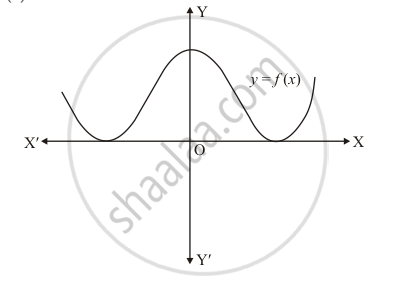Advertisements
Advertisements
प्रश्न
If a quadratic polynomial f(x) is a square of a linear polynomial, then its two zeros are coincident. (True/False).
उत्तर
The polynomial `f(x) = x62 = (x - 0)(x -0)` has two identical factors. The curve `y = x^2` cuts X axis at two coincident points that is exactly at one point.
Hence, quadratic polynomial `f(x)` is a square of linear polynomial then its two zeros are coincident. True .
APPEARS IN
संबंधित प्रश्न
Classify the following polynomials as linear, quadratic, cubic and biquadratic polynomials:
`t^2+1`
Define degree of a polynomial.
The graph of a polynomial f(x) is as shown in Fig. 2.21. Write the number of real zeros of f(x).

If the sum of the zeros of the polynomial f(x) = 2x3 − 3kx2 + 4x − 5 is 6, then the value ofk is
State whether the given algebraic expression is polynomial? Justify.
10
Identify the following expression is polynomial. If not give reason:
`1/x^2 + 3x - 4`
Let the polynomials be
(A) −13q5 + 4q2 + 12q
(B) (x2 + 4)(x2 + 9)
(C) 4q8 – q6 + q2
(D) `– 5/7 y^12 + y^3 + y^5`
Then ascending order of their degree is
An asana is a body posture, originally and still a general term for a sitting meditation pose, and later extended in hatha yoga and modern yoga as exercise, to any type of pose or position, adding reclining, standing, inverted, twisting, and balancing poses. In the figure, one can observe that poses can be related to representation of quadratic polynomial.


The shape of the poses shown is:
Classify the following as a constant, linear, quadratic and cubic polynomials:
3x3
Classify the following as a constant, linear, quadratic and cubic polynomials:
3
